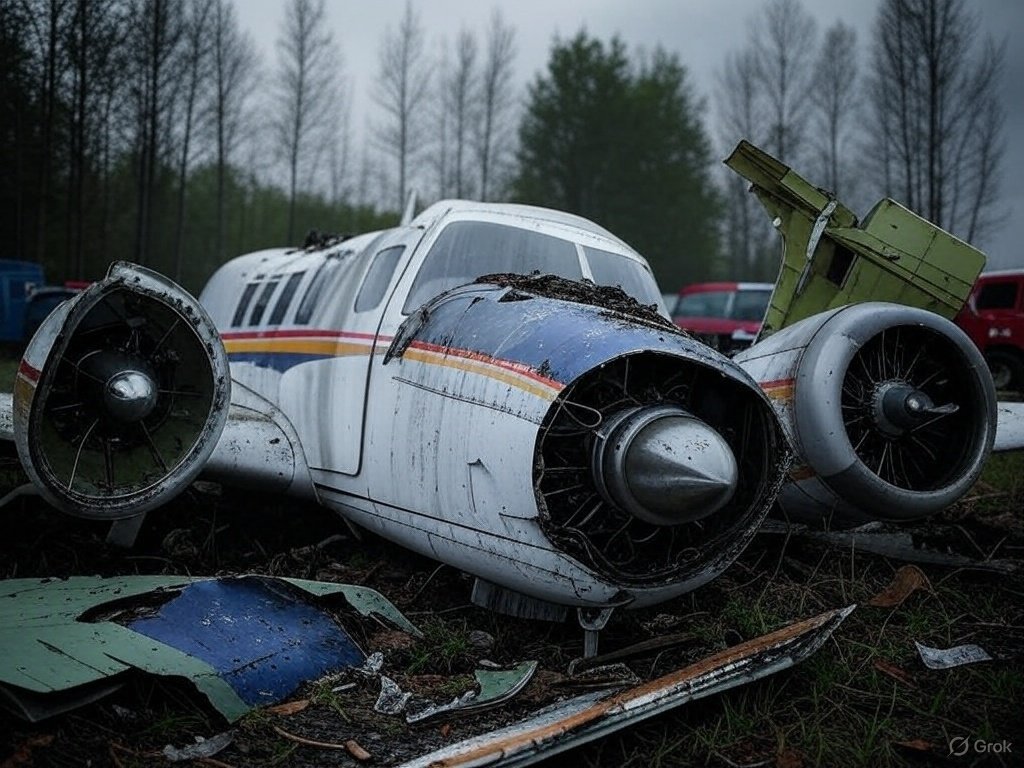Investigating the Tragic Crash: NTSB Report Reveals Pilot and Instructor Errors in Newberg Incident
NEWBERG, Ore. — In a deeply saddening turn of events, a final report released by the National Transportation Safety Board (NTSB) has clarified the causes behind a fatal plane crash that occurred in Newberg in October 2023. The crash tragically resulted in the deaths of a student pilot, Barrett Bevacqua, aged 20, and his flight instructor, Michele Cavallotti, aged 22. The report indicates that the incident was not due to mechanical failures but was primarily attributed to actions taken by both individuals involved in the flight.
The NTSB report explicitly states that the probable causes of the accident were rooted in “the pilot receiving instruction’s failure to maintain control of the airplane and the flight instructor’s inadequate supervision of the flight, which resulted in a stall/spin from which they were unable to recover.” This assertion underscores the critical importance of adherence to safety protocols and effective communication in aviation training.
A Closer Look at the Incident
The crash took place on October 3, 2023, during a flying lesson that included another student pilot, who was seated in the rear right seat and survived with serious injuries. The plane crashed through the roof of a nearby house; fortunately, all occupants of the house managed to evacuate safely.
Legal Proceedings Following the Tragedy
In the wake of this devastating incident, the family of Barrett Bevacqua filed a wrongful death lawsuit seeking $27 million in damages. The lawsuit names Hillsboro Aero Academy, Ascend Pilot Academy, Alaska Airlines, and Horizon Air as defendants. It claims that prior to the crash, Cavallotti, the pilot in command, was conducting a maneuver known as a single-engine minimum controllable airspeed demonstration, which may have led to the loss of control.
The lawsuit further states that “Mr. Cavallotti was required to comply with those operating limitations contained in the FAA-approved flight manual but did not.” This assertion highlights a significant concern regarding adherence to safety guidelines and operational protocols that are paramount in flight training scenarios.
Details from the NTSB Investigation
According to the final NTSB report, the surviving passenger had joined the flight to observe a multi-engine training session, during which techniques such as slow flight, emergency descent, steep turns, and stalls were practiced. The Vmc demonstration, an essential part of this training, involves reducing power on the critical engine and recovering before a stall or loss of directional control occurs. This particular flight marked Bevacqua’s first practice session, indicating the high stakes involved in training new pilots.
As they proceeded through the training, everything seemed to be progressing as planned until the stall warning sounded during the Vmc demonstration. In the moments leading up to the crash, the surviving passenger recalled a conversation between Bevacqua and Cavallotti about how to stop the spin. Eventually, Bevacqua requested Cavallotti to take control of the plane, which she did. However, it “became clear… they were not going to recover and that they were going to crash.”
The surviving passenger also noted that she “did not notice any mechanical defects” during the flight, although she was not present for the pre-flight inspection. This observation reinforces the report’s conclusion that the accident was not the result of mechanical failure.
Witness Accounts and Investigation Findings
Witnesses who observed the crash reported that the aircraft was “spinning or spiraling” as it descended. The NTSB’s examination following the crash found “no mechanical anomalies that would have precluded normal operation.” This finding is critical as it emphasizes the role of human factors over mechanical failures in this unfortunate incident.
The Importance of Safety Protocols in Flight Training
This tragic event serves as a stark reminder of the importance of strict adherence to safety protocols in aviation training. The NTSB’s findings underscore the need for flight instructors and student pilots to maintain clear communication and ensure that all maneuvers are conducted within safe operational limits. Proper training, supervision, and adherence to established protocols are essential in preventing such tragedies in the future.
Future Implications for Aviation Training
In light of the findings in the NTSB report, aviation training institutions must re-evaluate their training programs and protocols to ensure that they prioritize safety and compliance with federal regulations. This includes:
- Regular reviews of flight training curricula to incorporate lessons learned from incidents.
- Enhanced training for instructors on recognizing and mitigating risks during flight maneuvers.
- Stricter adherence to pre-flight checks and safety briefings.
- Encouragement of open communication between student pilots and instructors regarding safety concerns.
Conclusion
The NTSB’s final report on the tragic Newberg crash provides critical insights into the factors that contributed to this heartbreaking event. With both the pilot and flight instructor found to have played a role in the accident, it is imperative that the aviation community takes these findings seriously. By reinforcing the importance of safety protocols and ensuring that all parties involved in flight training are adequately prepared, it is possible to reduce the risk of future incidents. As we remember Barrett Bevacqua and Michele Cavallotti, let their legacy serve as a catalyst for change and improvement in the aviation training industry.




